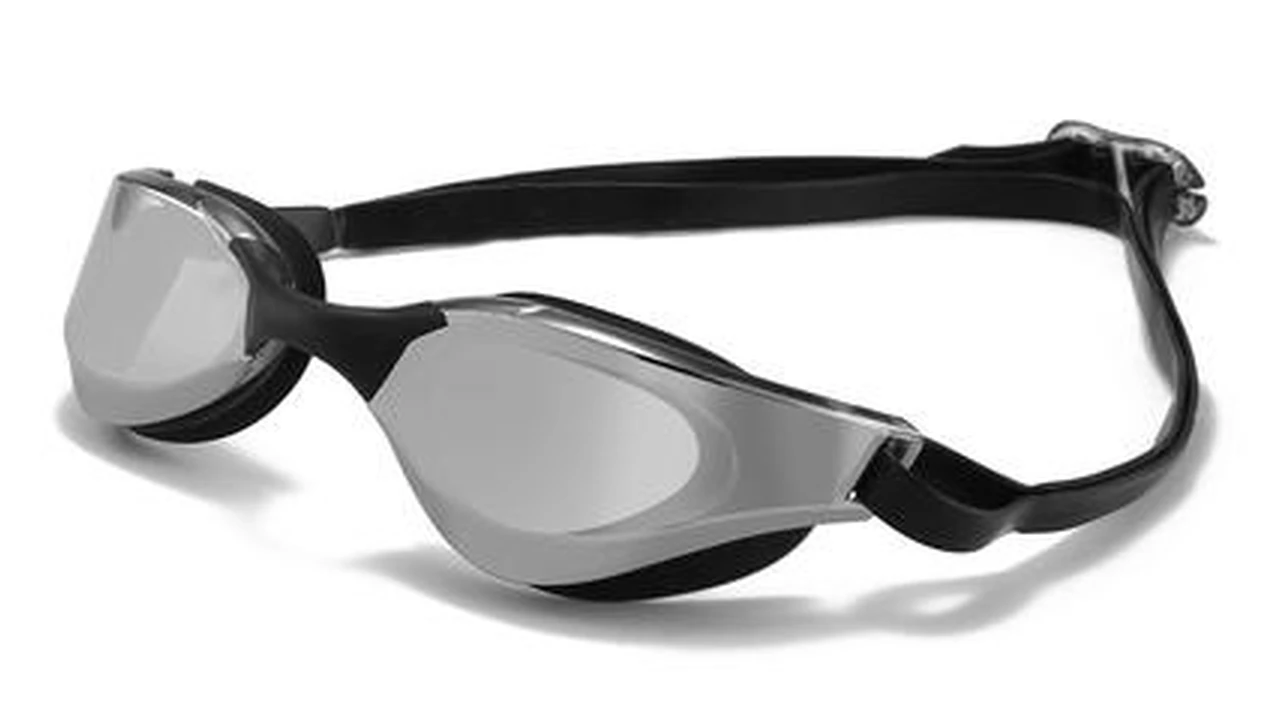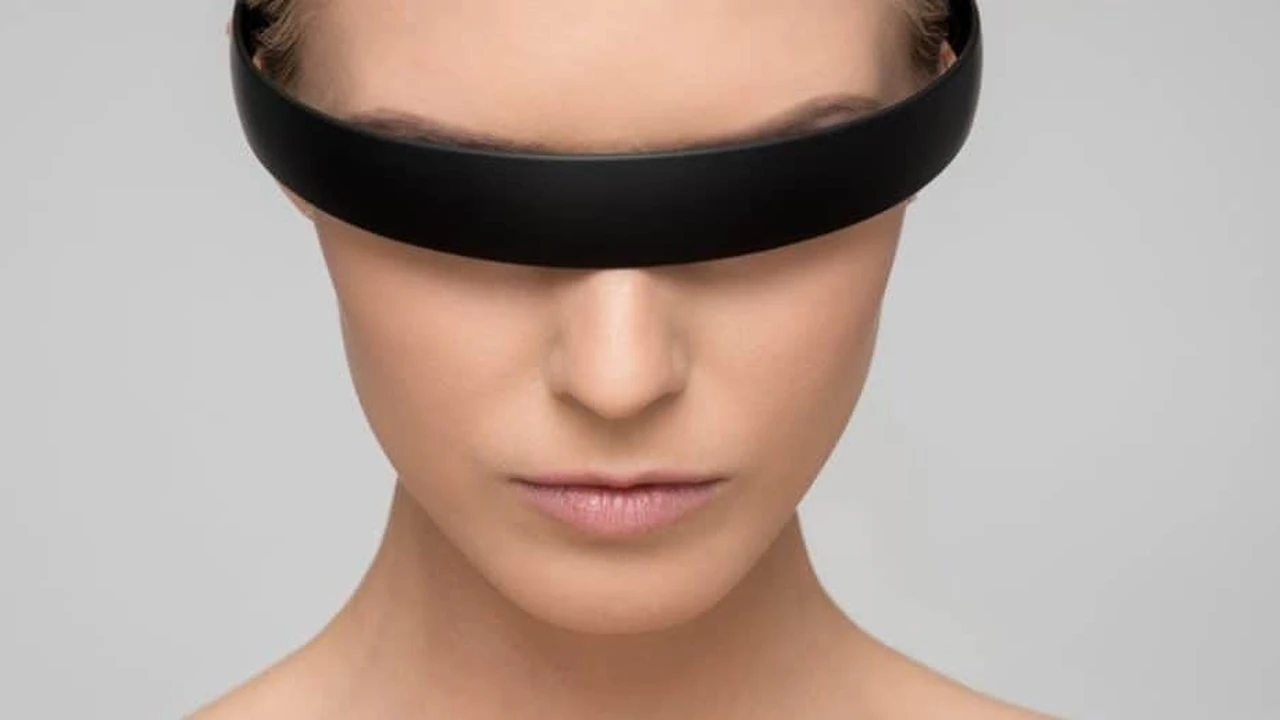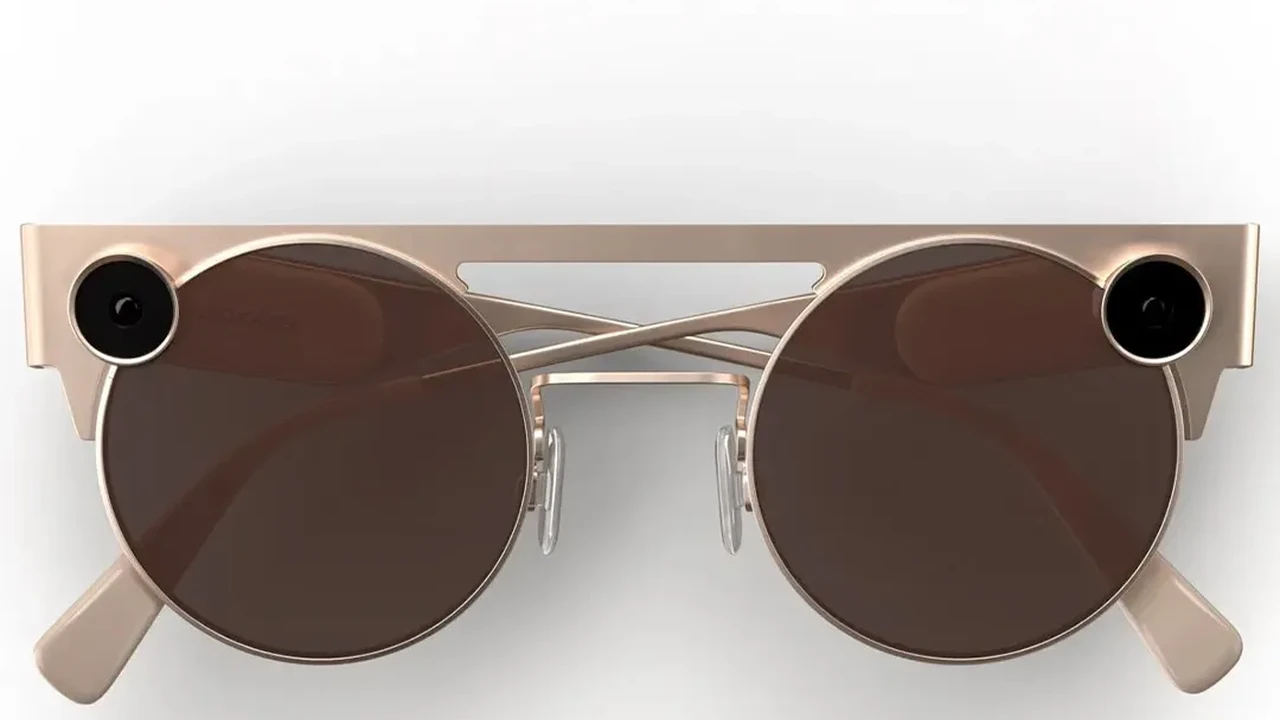Smart Glasses for Entertainment Immersive Experiences
Dive into immersive entertainment with smart glasses, from movies to interactive games.

Smart Glasses for Entertainment Immersive Experiences
The Dawn of Immersive Entertainment with Smart Glasses
Remember when 3D movies were all the rage? Or when virtual reality headsets first promised to transport us to new worlds? Smart glasses are the next evolution in immersive entertainment, blending digital content seamlessly with our real-world surroundings. They offer a unique blend of portability, convenience, and a level of immersion that traditional screens simply can't match. Whether you're a cinephile looking for a private cinema experience, a gamer seeking an edge, or someone who loves interactive content, smart glasses are opening up exciting new possibilities.
Unlike bulky VR headsets that completely block out your surroundings, most entertainment-focused smart glasses utilize augmented reality (AR) or mixed reality (MR) technologies. This means you can still see and interact with your physical environment while digital content is overlaid or integrated into your field of view. This 'see-through' capability is crucial for many entertainment scenarios, allowing for shared experiences or simply the ability to grab a snack without taking off your device.
Key Features to Look for in Entertainment Smart Glasses
When considering smart glasses for entertainment, several key features stand out. Understanding these will help you make an informed decision based on your primary use cases.
Display Quality and Field of View Smart Glasses Visuals
The visual experience is paramount for entertainment. Look for smart glasses with high-resolution displays, vibrant colors, and good contrast. The 'field of view' (FOV) is also critical; it determines how large and immersive the virtual content appears. A wider FOV generally means a more immersive experience, but it often comes with a higher price tag. Technologies like Micro-OLED and LCoS are commonly used, each with its own advantages in terms of brightness, clarity, and power efficiency.
Audio Experience Smart Glasses Sound Immersion
What's a great visual experience without equally great audio? Many smart glasses integrate open-ear audio, allowing you to hear both the digital content and your surroundings. Some offer directional audio to minimize sound leakage, while others allow for connection to external Bluetooth headphones for a more private and immersive soundstage. Look for clear audio, good bass response, and minimal distortion.
Comfort and Design Smart Glasses Wearability
You'll be wearing these for extended periods, so comfort is key. Consider the weight distribution, nose pad design, and overall fit. Some smart glasses resemble traditional eyewear, making them more discreet and comfortable for public use. Others might be slightly bulkier but offer superior performance. Material quality and durability are also important factors.
Connectivity and Compatibility Smart Glasses Ecosystem
How do the smart glasses connect to your content sources? Most rely on USB-C for direct connection to smartphones, laptops, or gaming consoles. Some offer wireless connectivity via Wi-Fi or Bluetooth. Ensure compatibility with your existing devices and preferred streaming platforms or gaming ecosystems. App support and a robust content library are also crucial.
Battery Life Smart Glasses Usage Duration
For movies or extended gaming sessions, a long battery life is essential. Some smart glasses have integrated batteries, while others rely on an external power bank or the connected device's battery. Check the advertised battery life for typical entertainment use cases.
Top Smart Glasses for Entertainment A Comparative Review
Let's dive into some of the leading smart glasses on the market that excel in entertainment, comparing their features, use cases, and pricing.
Nreal Air Smart Glasses Immersive Portable Display
The Nreal Air (now XREAL Air) has become a popular choice for portable immersive entertainment. It's designed to be lightweight and comfortable, resembling a pair of slightly oversized sunglasses. It connects via USB-C to compatible Android phones, iPhones (with an adapter), Windows PCs, and even gaming consoles like the Steam Deck or Nintendo Switch.
- Display: Dual Micro-OLED displays, offering a '130-inch screen' at 4 meters or a '201-inch screen' at 6 meters. Resolution is 1920x1080 per eye, with a 46-degree FOV. The visuals are sharp and vibrant, making movies and games truly pop.
- Audio: Integrated directional speakers in the temples. While decent for casual listening, serious audiophiles will want to pair them with Bluetooth headphones.
- Use Cases: Excellent for watching movies and TV shows on the go (on planes, trains, or just in bed), playing mobile games on a larger virtual screen, or even connecting to a Steam Deck for a portable big-screen gaming experience. It's also great for productivity, offering multiple virtual monitors.
- Pros: Lightweight, comfortable, excellent display quality, wide compatibility, relatively affordable.
- Cons: Limited AR capabilities (more of a 'display' than a true AR experience), requires a wired connection, integrated audio is average.
- Price: Approximately $379 - $399 USD.
Rokid Air Smart Glasses Personal Cinema Experience
Similar to the Nreal Air, the Rokid Air focuses on delivering a personal big-screen experience. It's also lightweight and offers a comfortable fit, making it suitable for extended viewing sessions.
- Display: Dual Micro-OLED displays, projecting a '120-inch screen' at 4 meters. Resolution is 1920x1080 per eye, with a 43-degree FOV. The visuals are crisp and bright.
- Audio: Built-in directional speakers. Again, external headphones are recommended for the best audio immersion.
- Use Cases: Ideal for watching movies, streaming content, and playing games from connected devices. It also supports voice control for hands-free operation.
- Pros: Good display quality, comfortable, voice control features, competitive pricing.
- Cons: Similar to Nreal Air, it's primarily a virtual display, not a full AR experience. Wired connection required.
- Price: Approximately $359 - $399 USD.
Vuzix Blade 2 Smart Glasses Enterprise and Entertainment Blend
While often marketed for enterprise, the Vuzix Blade 2's capabilities make it a strong contender for certain entertainment applications, especially those requiring more robust AR features and standalone operation.
- Display: Waveguide optics with a full-color display. While the FOV is smaller than the Nreal/Rokid (28 degrees), it offers true AR overlay, meaning digital content is more seamlessly integrated into your view.
- Audio: Integrated speakers and noise-canceling microphones.
- Use Cases: Beyond enterprise, it can be used for AR gaming that interacts with your environment, viewing notifications, or even streaming content with an overlay. Its standalone Android OS allows for direct app installation.
- Pros: True AR capabilities, standalone operation (Android OS), robust build quality, good for hands-free information display.
- Cons: Higher price point, smaller FOV compared to display-focused glasses, not as optimized for pure 'big screen' movie watching.
- Price: Approximately $1,299 - $1,499 USD.
Ray-Ban Stories Smart Glasses Casual Capture and Audio
Ray-Ban Stories, developed with Meta, are less about immersive visuals and more about casual content capture and audio. They are designed to look and feel like regular Ray-Ban sunglasses, making them incredibly discreet.
- Display: No visual display for immersive content. These are primarily for capturing photos/videos and audio.
- Audio: Open-ear speakers for listening to music, podcasts, and taking calls. The audio quality is surprisingly good for open-ear tech.
- Use Cases: Listening to music discreetly, taking hands-free calls, and capturing short videos or photos of your experiences without pulling out your phone. Great for concerts, walks, or social gatherings where you want to stay present but still capture moments.
- Pros: Stylish, discreet, excellent audio for open-ear, easy content capture, comfortable for all-day wear.
- Cons: No visual display for immersive entertainment, limited smart features beyond capture and audio.
- Price: Approximately $299 - $379 USD.
Xiaomi Smart Glasses Concept Future of Entertainment
While still a concept, Xiaomi's Smart Glasses offer a glimpse into the future of entertainment-focused smart glasses. They aim for a truly integrated experience, combining a MicroLED optical waveguide display with advanced AI features.
- Display: Monochrome MicroLED display for notifications, navigation, and basic information overlay. The goal is to integrate a full-color display in future iterations for richer entertainment.
- Audio: Integrated speakers and microphones.
- Use Cases (Concept): Real-time translation, navigation, teleprompter, notifications, and potentially basic AR games or information overlays. The entertainment aspect would likely evolve with full-color display integration.
- Pros (Concept): Lightweight, truly discreet design, advanced AI integration, potential for seamless daily use.
- Cons (Concept): Not yet a consumer product, current display is monochrome, full entertainment capabilities are still theoretical.
- Price: Not applicable as it's a concept.
Smart Glasses for Gaming Augmented Reality Gaming Experiences
Gaming on smart glasses is a rapidly evolving area. While full VR headsets offer complete immersion, smart glasses provide a unique AR gaming experience that blends digital elements with your physical space.
Mobile Gaming on a Big Screen Smart Glasses for Casual Gamers
For casual mobile gamers, smart glasses like the Nreal Air or Rokid Air transform your phone screen into a massive virtual display. This is fantastic for games that don't require precise physical interaction, like turn-based RPGs, puzzle games, or even streaming cloud gaming services like Xbox Game Pass or GeForce Now. You get the benefit of a large screen without being tethered to a TV or monitor.
AR Gaming Smart Glasses Interactive Play
True AR gaming on smart glasses involves games that interact with your real-world environment. Imagine shooting virtual aliens that appear to be hiding behind your furniture, or playing a digital board game on your coffee table. Devices like the Vuzix Blade 2 or future iterations of more advanced AR glasses will excel here. Developers are still exploring the full potential of this, but the possibilities are exciting.
Cloud Gaming and Console Connectivity Smart Glasses as Portable Displays
Many smart glasses can connect to gaming consoles (like Nintendo Switch, PlayStation, Xbox) or handheld gaming PCs (like Steam Deck, ROG Ally) via USB-C. This effectively turns your smart glasses into a portable, private gaming monitor. You can play your favorite console games on a '100-inch screen' anywhere you go, which is a game-changer for travel or shared living spaces.
Smart Glasses for Movies and Streaming Your Personal Cinema
This is arguably where current entertainment smart glasses shine the brightest. The ability to have a massive, private screen for movies and TV shows is incredibly appealing.
Private Viewing Smart Glasses for Travel and Commuting
Imagine being on a long flight or train ride and having a personal cinema screen in front of you. Smart glasses eliminate the need for tiny airplane screens or craning your neck to see a tablet. They offer a truly immersive and private viewing experience, perfect for blocking out distractions and enjoying your content.
Home Entertainment Smart Glasses for Casual Viewing
Even at home, smart glasses can be a great alternative to a TV. Want to watch a movie in bed without disturbing your partner? Or perhaps you want to stream a show while doing chores around the house? Smart glasses offer flexibility and a unique viewing perspective.
Content Compatibility Smart Glasses Streaming Services
Most smart glasses that function as external displays will work with any streaming service accessible on your connected device (phone, laptop, etc.). This means you can watch Netflix, Hulu, Disney+, YouTube, and more, all on your virtual big screen. Some smart glasses might even have their own app stores for direct streaming.
The Future of Entertainment with Smart Glasses Beyond Today
The current generation of entertainment smart glasses is just the beginning. The technology is rapidly advancing, and we can expect even more immersive and integrated experiences in the near future.
Holographic and Volumetric Displays Smart Glasses Evolution
Imagine not just seeing a flat screen, but truly holographic content that appears to exist in your physical space. Future smart glasses might incorporate volumetric displays, allowing for truly three-dimensional objects and characters to interact with your environment, blurring the lines between digital and physical entertainment.
Advanced AI and Contextual Entertainment Smart Glasses Intelligence
AI will play an increasingly important role. Smart glasses could analyze your surroundings and suggest relevant content, or even adapt entertainment experiences based on your mood or activity. Imagine an AR game that dynamically changes based on the layout of your room, or a movie that subtly adjusts its soundtrack to match your emotional state.
Seamless Integration with the Metaverse Smart Glasses and Virtual Worlds
As the metaverse evolves, smart glasses will be a primary gateway. They will allow us to seamlessly transition between physical and virtual worlds, participating in virtual concerts, social gatherings, or interactive narratives that blend with our real-world surroundings. This will open up entirely new forms of entertainment that are currently unimaginable.
Lighter, More Stylish Designs Smart Glasses Fashion Integration
As technology miniaturizes, smart glasses will become even more discreet and stylish, resembling regular eyewear. This will make them more socially acceptable and encourage wider adoption for everyday entertainment, allowing you to carry your personal cinema or gaming rig in your pocket.
Choosing Your Entertainment Smart Glasses A Personal Decision
Ultimately, the best smart glasses for entertainment depend on your specific needs and budget. If you're primarily looking for a portable, big-screen experience for movies and casual gaming, the Nreal Air or Rokid Air are excellent, affordable choices. If you're interested in more robust AR experiences or require standalone functionality, devices like the Vuzix Blade 2 might be more suitable, though at a higher price point. For discreet audio and casual content capture, the Ray-Ban Stories are a unique option.
Consider what kind of content you consume most, where you plan to use the glasses, and how much you're willing to invest. The world of smart glasses for entertainment is exciting and rapidly expanding, promising a future where immersive experiences are always just a glance away.
:max_bytes(150000):strip_icc()/277019-baked-pork-chops-with-cream-of-mushroom-soup-DDMFS-beauty-4x3-BG-7505-5762b731cf30447d9cbbbbbf387beafa.jpg)






